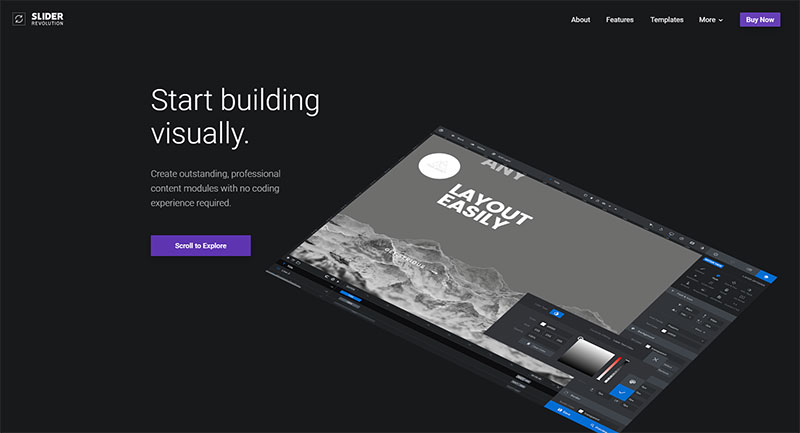

- Slider revolution how to fix broken links update#
- Slider revolution how to fix broken links full#
- Slider revolution how to fix broken links download#
I hope this helped and please share your own method that solved the WordPress image problems when moving websites to a new server.Broken links are bad for your site, in Google's term it’s like a poison being delivered to readers in form of pure water. Also, there are other reliable web hosts that are fast for your WordPress blog, and all the other types of CMS and even static sites. That will not only speed up your blog and serve your images correctly, but it will help rank better in Google for the super-fast loading time. If you’re hosting on a shared server, then it’s time to think about fully managed and premium hosting for WordPress, I recommend WP Engine. That will help to fix the problem in their server. If you still get broken WordPress images, then, you have one single solution is to contact your hosting provider and show them some examples of your missed images, and any errors screenshots if you have them.
Slider revolution how to fix broken links update#
UPDATE wp_posts set post_content=REPLACE(post_content, ''Then, the blog images will work again. The above solutions will solve your problem if the server is working properly, and there is nothing wrong with its configuration.
Slider revolution how to fix broken links download#
So download a backup of your site database to use it later for restoration if needed.
Slider revolution how to fix broken links full#
But first, you should definitely make a backup of your full database because if you do the code the wrong way. The second option that I recommend only for advanced users is to open your phpMyAdmin interface and just run the next SQL query. Then, you can download your corrected database, and use it on the new server. If your SQL database file is less than 5 MB in size, then, you can upload it to the Search and Replace, and add the old and the new domains, and the tool will make the necessary changes.

This process will modify the database tables, and you should be sure when you enter the Url. At the same time save a copy of your database if something wrong happens. Please make sure that you’ve entered the exact new blog URL. Check the box” All-search/replace!” when you’re sure and you find the old URLs. But, in general, you need to search the old URLs and make them the new blog address. So login to your cPanel account, and then, click on the File Manager icon as the following screenshot.Īlso, you can use the plugin options to find a specific database table if you want. In this case, you can see that the month is “05” and you need to verify that exact file. Just see what is the month that is associated with the image URL.Įxample: /wp-content/uploads/2021/05/this-is-an-image.png If you’re using one of the plugins that detect broken links, you can easily find the exact folder.

If you have moved the blog or website files to a new location, but with the same domain name, then, the problem can be caused by the “Uploads” folder itself, or a specific file inside it, and it’s the exact “month file”. So, read the exact case that you have, or follow them, one by one. Please note, I suppose all the cases, and I will show you how to solve each one of them. Images not showing after moving WordPress I’ll show you how to fix the problem in the following tutorial. In other cases, where you change the domain name of your blog, you need to replace all the old database URLs with the new ones. If you’ve just moved the blog files, but without changing the domain name, then, the problem was caused by missed images really, and the folder that contains these images is broken and you need to re-upload the folder manually. But sometimes, the WordPress images will not show up again after a migration, and that’s a problem to solve in easy steps.įirst, let’s understand why these images are broken after moving a blog to a new server or hosting. The WordPress migration process can be easy if you follow some basic tips and rules to avoid errors.


 0 kommentar(er)
0 kommentar(er)
